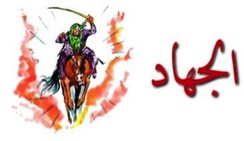
The horse and rider motif is common in jihadi visual propaganda. The rider emphasizes the element of human agency in jihad, and is a way to enhance the traditional symbol of a horse and flesh out notions of aggression and the call to jihad. The horse is an important symbol in both pre-Islamic Arabia and Islamic culture. Traditionally, horses have been ascribed with positive qualities of chivalry, bravery in battle and victory as evidenced in pre-Islamic poetry, the Qur’an, hadiths (prophetic traditions or reports) and other genres of literature. For example, the beginning of the Qur’anic sura 100 talks about “running horses” that appear as galloping through the world toward the final goal, namely, Judgment Day. Horses are also symbolic of the first generation of Muslims and that generation’s successful military campaigns, and are thus often employed to evoke Salafi religious sentiments with regard to the military victories of Muhammad and his companions, including jihadist sentiments. This image, which includes the caption “Al-Jihad” on the left side, exemplifies the use of the horse motif to convey a connection (both religious and practical) between the jihad of early Islam and that which some Muslims believe is occurring today. In this way, the image places current jihadi activities within the same unfolding dialectic as the jihad of early Islam.
 Skip to content
Skip to content
